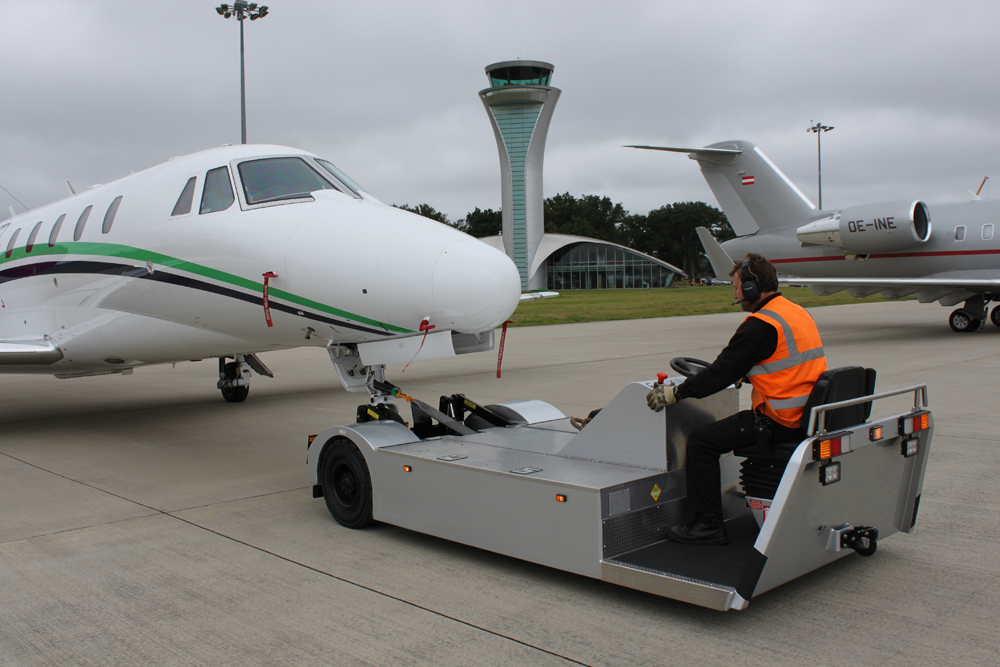Tugs are very vital for airport operations as they help planes and other kinds of ground support equipment to move. Ensuring safe operation practices becomes more crucial as their usage expands across many industries, including commercial aircraft, freight transportation, and military missions. Key safety precautions to take when running tugs at airports are listed below.
Training and Certification of Operators
Making sure every operator is qualified and well-trained is one of the essential elements of safe airport tug operation. Training courses should include emergency procedures, safety rules, and vehicle operation. Operators have to be familiar with airport design, including runways, taxiways, and authorised tug tracks. Furthermore, the safe functioning of the aircraft or equipment being towed depends on knowing their particular details. Additionally required should be regular refresher courses to keep operators informed on fresh rules, technology, and best practices.
Pre-Operational Inspections
A comprehensive pre-operational check is very essential before any tug is set to action. Operators should look for any obvious flaws or maintenance concerns like tire condition, brake performance, fluid levels, and general vehicle cleanliness. Since this directly affects the safety of the aircraft being transported, they also have to check the towing system to guarantee it is safe and operating as required.
Visibility and communication with other airport staff depend on lighting and signals working as they should. Maintaining a maintenance diary guarantees that any problems are resolved quickly and helps to monitor these checks, therefore lowering the chance of mishaps. This proactive strategy improves safety and helps the tug itself to be dependable and long-lasting, therefore supporting effective airport operations.
Communication Protocols
Any airport operation depends on good communication, especially while running tugs. Clear, consistent communication methods should be used by operators to coordinate ground personnel, other tug operators, and air traffic control. The toolkit of communication should include hand gestures, radio transmission, and visual indications. Encouragement of open communication helps to reduce the possibility of misconceptions that could cause mishaps and promotes collaboration.
Awareness of Surroundings
For tug operators, a fundamental safety habit is situational awareness. They have to be alert to their surroundings, such as other vehicles, people walking, and aeroplanes. This consciousness should also include seeing any possible threats, including changing weather or objects on the taxiway. Trained operators should be able to predict the movements of other aircraft and vehicles, therefore guaranteeing their safe distance throughout job execution.
Use of Personal Protective Equipment
Safety depends on more than just operating practices; ground personnel’s well-being is also vital. High-visibility vests, hard helmets, and safety shoes are among the suitable personal protection equipment (PPE) operators and ground workers should use. Following PPE guidelines helps reduce hazards related to working in crowded airport surroundings when the accident probability is higher.
Safe Driving Practices
Driving tugs at airports need much more care than usual vehicle operating. Operators should follow airport speed restrictions and pay close attention to the requirement of stopping airplanes and other ground vehicles. They also have to be taught how to navigate confined areas, especially when living near airports. Operators should, while reversing, utilize spotters as needed to guarantee a clean route.
Emergency Preparedness
Emergencies may strike even with the best of efforts. Tug operators have to be ready for everything from equipment breakdown to vehicle accidents to bad weather. Creating and implementing emergency response strategies guarantees that every staff member understands their part in a disaster. Frequent exercises guarantee that everyone is acquainted with evacuation routes, means of communication, and emergency equipment, thereby strengthening these preparations.
Adhering to Regulatory Standards
Every tug operation has to follow local, national, and international rules controlling airport security. Knowledge of these rules not only improves safety but also guarantees that companies stay free from any fines or legal problems. Maintaining compliance and guaranteeing the safety of every airport activity depend on keeping current with the most recent standards and integrating them into training and operational processes.
Conclusion
The safe running of tugs at airports is a shared duty, including many aspects, and calls for everyone engaged to be committed. Airport officials may provide a safer working environment by stressing operator training, doing extensive inspections, building good communication, and following safety rules. The value of these safety procedures will only grow as the aviation sector develops to guarantee that tugs remain a necessary and safe component of airport operations in many different industries.



